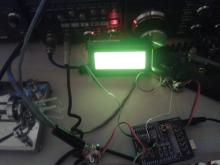UPDATED
A couple of years ago, I wote about a new keyer I was working on. What I meant by "working on" at that point was the software. I got a ways into that project and then essentially no farther. Life intervened and I got interested in other things and ran into some issues that I couldn't immediately overcome and a dozen other wimped-out excuses. So, it might come as a shock, assuming that there's anyone left who is paying attention, that I've not only continued to work on this project, but have actually made progress.

